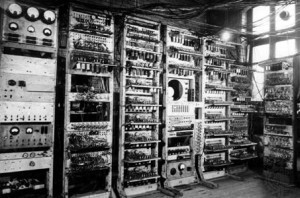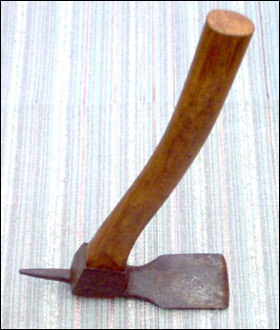How Big is The First Computer?
We’re all accustomed to the personal computer sitting on our desk, but there was a time when a computer was actually as big as a deck. This was certainly the case with the world’s first computer. But there’s not just the question of how big it was, but also of which exactly was the very first digital computer.
our desk, but there was a time when a computer was actually as big as a deck. This was certainly the case with the world’s first computer. But there’s not just the question of how big it was, but also of which exactly was the very first digital computer.
The Electronic Numerical Integrator and Computer, ENIAC for short, had once been considered as the world’s first electronic digital computer. The contract for its construction was signed on June 5, 1943 and was built in secrecy until its public unveiling on February 14, 1946. It was created primarily for military purposes, such as calculating the artillery firing tables for the Ballistics Research Lab of the United States Army, and notably in running calculations related to the conception of the hydrogen bomb.
In comparison to the computers of today, ENIAC was incredibly enormous, weighing 30 short tons (27 t), with dimensions of about 8.5 feet (2.6 m) by 3 feet (0.9 m) by 80 feet (26 m) and taking up 680 square feet (63 m2). Its components included 17,468 vacuum tubes, 7,200 crystal diodes, 1,500 relays, 70,000 resistors, 10,000 capacitors and approximately 5,000,000 hand-soldered joints. It could consume 150 kilowatts of electricity.
ENIAC was conceptualized and designed by J. Presper Eckert and John Mauchly of the University of Pennsylvania. They were assisted by a team of engineers that included Arthur Burks, Chuan Chu, Jack Davis, Iredell Eachus Jr., Harry Huskey, Thomas Kite Sharpless and Robert F. Shaw. ENIAC was granted a patent as the first digital computer in 1964, but it was voided in 1973 when the existence of an even earlier attempt came to light.
The Atanasoff-Berry Computer, or ABC, was developed from 1937 to 1942 by American physicist John Vincent Atanasoff and inventor Clifford Berry. The machine had been completed and tested successfully, but it had never been patented. As the nation’s top scientific and engineering minds turned their attention to winning World War II, the ABC was left to languish in the Iowa State University physics department’s basement and had been virtually forgotten for years. Since then, the ENIAC had claimed credit for being the first digital computer, until its patent was revoked in 1973 when the courts ruled that its design had been based on that of the ABC.
ABC weighed over 700 lbs (320 kg) and took up 800 square feet (74 m2). Around the size of a whole desk, it consisted of 280 vacuum tubes, 31 thyratrons and more than 5,000 feet (1.6 km, roughly a mile) of wire. The original ABC had been dismantled after the war ended, but an exact replica was built by the Iowa State University in 1997. This new version is approximately 6 feet wide and 33 inches deep, 3 inches shorter than its prototype (which was 36 inches deep).
Since then, computer technology has evolved in fascinating ways. Along with the PC’s on our desks, there’s also the laptop, and there soon may be computers that can fit in the palm of our hands. And it terms of capacity, today’s machines vastly outperform their massive forebears. It’s interesting to note that the computer’s downgrade in size runs in contrast to the upgrade of its capability.





